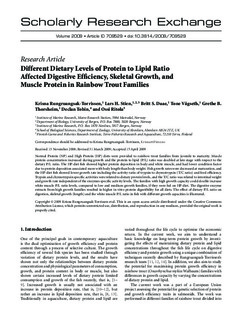| dc.contributor.author | Torrissen, Krisna Rungruangsak | |
| dc.contributor.author | Stien, Lars Helge | |
| dc.contributor.author | Daae, Britt S. | |
| dc.contributor.author | Vågseth, Tone | |
| dc.contributor.author | Thorsheim, Grethe B. | |
| dc.contributor.author | Tobin, Declan | |
| dc.contributor.author | Ritola, Ossi | |
| dc.date.accessioned | 2010-11-10T13:51:23Z | |
| dc.date.available | 2010-11-10T13:51:23Z | |
| dc.date.issued | 2009 | |
| dc.identifier.citation | Article ID 709529 | en_US |
| dc.identifier.issn | 1687-8302 | |
| dc.identifier.issn | 1687-8299 | |
| dc.identifier.uri | http://hdl.handle.net/11250/108490 | |
| dc.description | Copyright © 2009 Krisna Rungruangsak-Torrissen et al. This is an open access article distributed under the Creative Commons Attribution License, which permits unrestricted use, distribution, and reproduction in any medium, provided the original work is properly cited. | |
| dc.description.abstract | Normal Protein (NP) and High Protein (HP) diets were provided to rainbow trout families from juvenile to maturity. Muscle protein concentration increased during growth and the protein to lipid (P/L) ratio was doubled at late stage with respect to the dietary P/L ratio. The HP-diet fish showed higher protein deposition in body and white muscle, and had lower condition factor due to protein deposition associated more with body length than body weight. Fish growth rates were decreased at maturation, and the HP-diet fish showed lower growth rate including the activity ratio of trypsin to chymotrypsin (T/C ratio) and feed efficiency. Trypsin and chymotrypsin specific activities were related to dietary protein levels, and the T/C ratio was related to intestinal weight and growth rate independent of the enzymes specific activity levels. The families with high growth capacity could double increase white muscle P/L ratio levels, compared to low and medium growth families, if they were fed on HP-diet. The digestive enzyme extracts from high growth families resulted in higher in vitro protein digestibility for all diets. The effect of dietary P/L ratio on digestion, skeletal growth (length) and the white muscle P/L ratio in fish with different growth capacities is illustrated. | en_US |
| dc.language.iso | eng | en_US |
| dc.publisher | Hindawi Publishing Corporation | en_US |
| dc.subject | ernæring | en_US |
| dc.subject | nutrition | en_US |
| dc.subject | regnbueørret | en_US |
| dc.subject | rainbow trout | en_US |
| dc.title | Different Dietary Levels of Protein to Lipid Ratio Affected Digestive Efficiency, Skeletal Growth, and Muscle Protein in Rainbow Trout Families | en_US |
| dc.type | Journal article | en_US |
| dc.type | Peer reviewed | en_US |
| dc.subject.nsi | VDP::Mathematics and natural science: 400::Basic biosciences: 470::Molecular biology: 473 | en_US |
| dc.subject.nsi | VDP::Agriculture and fishery disciplines: 900::Fisheries science: 920::Resource biology: 921 | en_US |
| dc.source.pagenumber | 13 s. | en_US |
| dc.source.volume | 2009 | |
| dc.source.journal | Scholarly Research Exchange | |
| dc.identifier.doi | http://dx.doi.org/10.3814/2009/709529 | |
